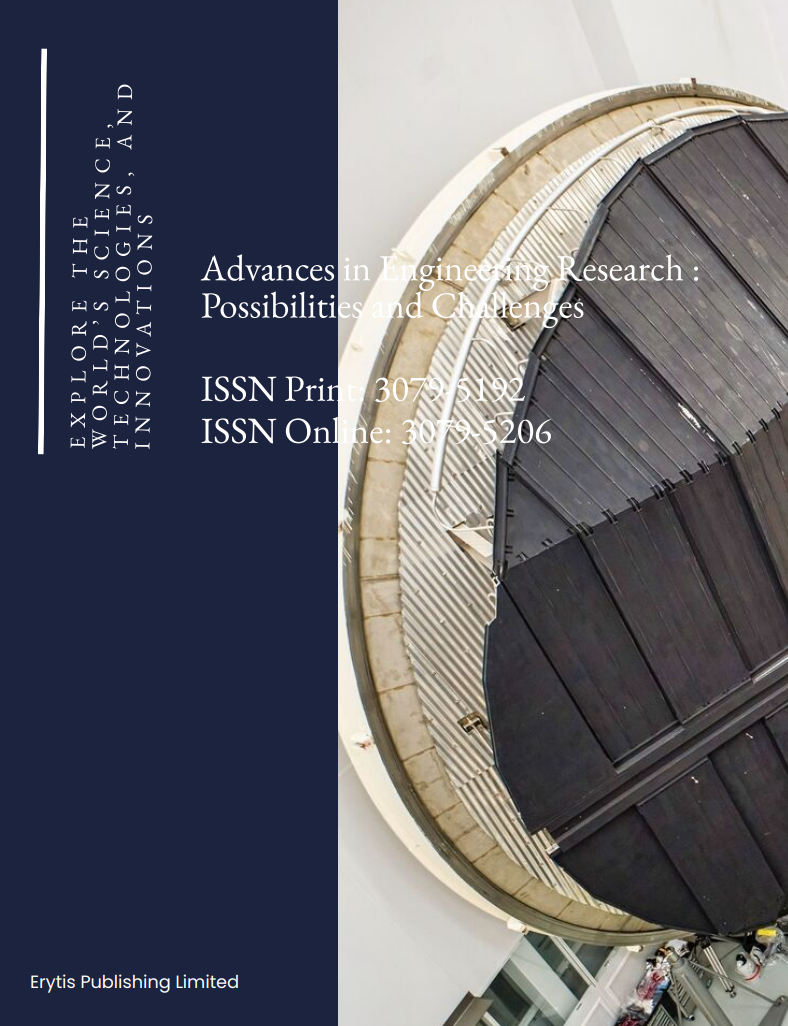Simulation and Parameter Influence Study on Metal Pipeline Defect Detection Based on Pulsed Eddy Current
DOI:
https://doi.org/10.63313/AERpc.9010Keywords:
Pulsed Eddy Current, Pipeline Defect Detection, Finite Element Simulation, Pa-rameter analysisAbstract
Metal pipelines, when subjected to prolonged service in complex working environments, are highly susceptible to defects such as corrosion and cracks, which pose significant threats to the safe operation of pipeline systems. Pulsed eddy current testing (PECT), as an emerging non-destructive testing method, offers notable advantages including rapid detection speed, high sensitivity, strong reliability, and non-contact inspection, demonstrating broad application prospects in the field of metal pipeline defect detection. This paper, based on finite element simulation analysis, establishes a PECT simulation model for metal pipeline defects. It investigates the influence of key factors in excitation signal parameters and coil structure parameters on the detection signals, elucidates the relationship between these parameters and detection effectiveness, and provides theoretical foundations and technical references for the optimal design of PECT system parameters and practical engineering applications.
References
[1] Azzura I, Farhana M S N, Lokman M N, Mahzan S, Ahmad S, Taib H, et al.(2019). Identifica-tion Corrosion Hydrogen Attack on Carbon Steel Using Magnetic Particle Inspection (MPI). International Conference On Mechanical Engineering Research And Application, 494, 012059. doi:10.1088/1757-899X/494/1/012059
[2] Cheng Jingui, Xu Lei, Li Chao.(2021). A review of two types of non-destructive testing technique for pressure pipelines. Insight, 63(6): 326-333. https://doi.org/10.1784/insi.2021.63.6.326
[3] Fang Jie, Shen Jialong, Xiong Lei.(2024). Modelling and experimental study on pipeline de-fect characterisations using a pulsed eddy current measurement. Nondestructive Testing And Evaluation, 1-23. https://doi.org/10.1080/10589759.2024.2413693
[4] Ghavamian A, Mustapha F, Baharudin B T H T, &Yidris N.(2018). Detection, localisation and assessment of defects in pipes using guided wave techniques: A Review. Sensors (Basel, Switzerland), 18(12): 4470. https://doi.org/10.3390/s18124470
[5] Li Hui, Wang Yongan, Zhang Xiaodong.(2019). Research Progress on an Intelligent X-ray Backscattering Nondestructive Testing Robot for the Internal Inspection of Petroleum Pipelines. 2019 IEEE Nuclear Science Symposium and Medical Imaging Conference (NSS/MIC). doi: 10.1109/NSS/MIC42101.2019.9059791
[6] Li Hui, He Liang, Li Hua, Li Deyuan.(2024). Simulation of defect detection for the buried petroleum pipe by the X-ray backscatter imaging. APPLIED Radiation And Isotopes, 207, 111278. https://doi.org/10.1016/j.apradiso.2024.111278
[7] Mardaninejad R, Safizadeh M S.(2019). Gas Pipeline Corrosion Mapping Through Coating Using Pulsed Eddy Current Technique. Russian Journal Of Nondestructive Testing, 55(11): 856-867. https://doi.org/10.1134/S1061830919110068
[8] Nagy P B, Simonetti F, Instanes G.(2014). Corrosion and erosion monitoring in plates and pipes using constant group velocity Lamb wave inspection. Ultrasonics, 54: 1832-1841. https://doi.org/10.1016/j.ultras.2014.01.017
[9] Wang Gang, Li Yuting, Xiao Qi, Li Wenhui.(2023). Finite element study of remote field eddy current methods for inner diameter and outer diameter pipeline defect classifica-tion.Insight, 65(3): 139-145. https://doi.org/10.1784/insi.2023.65.3.139
[10] Zhang Wei, Li Yanjun, Shi Yibing, Xiao Siwei, Li Zhipeng.(2019). Finite element simulation analysis of influencing factors in near field eddy current testing. Proceedings Of 2019 14TH IEEE International Conference On Electronic Measurement & Instruments (ICEMI), 992-1000. doi: 10.1109/ICEMI46757.2019.9101695
Downloads
Published
Issue
Section
License
Copyright (c) 2025 by author(s) and Erytis Publishing Limited.

This work is licensed under a Creative Commons Attribution 4.0 International License.















